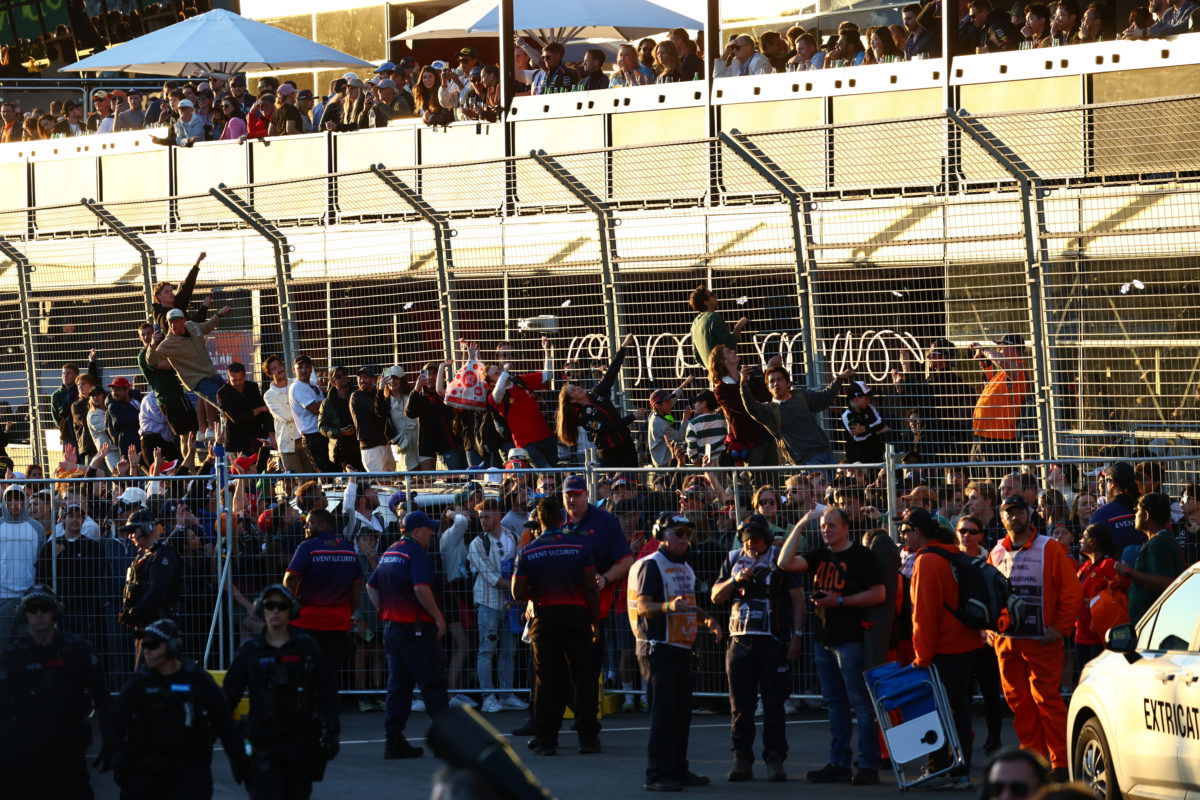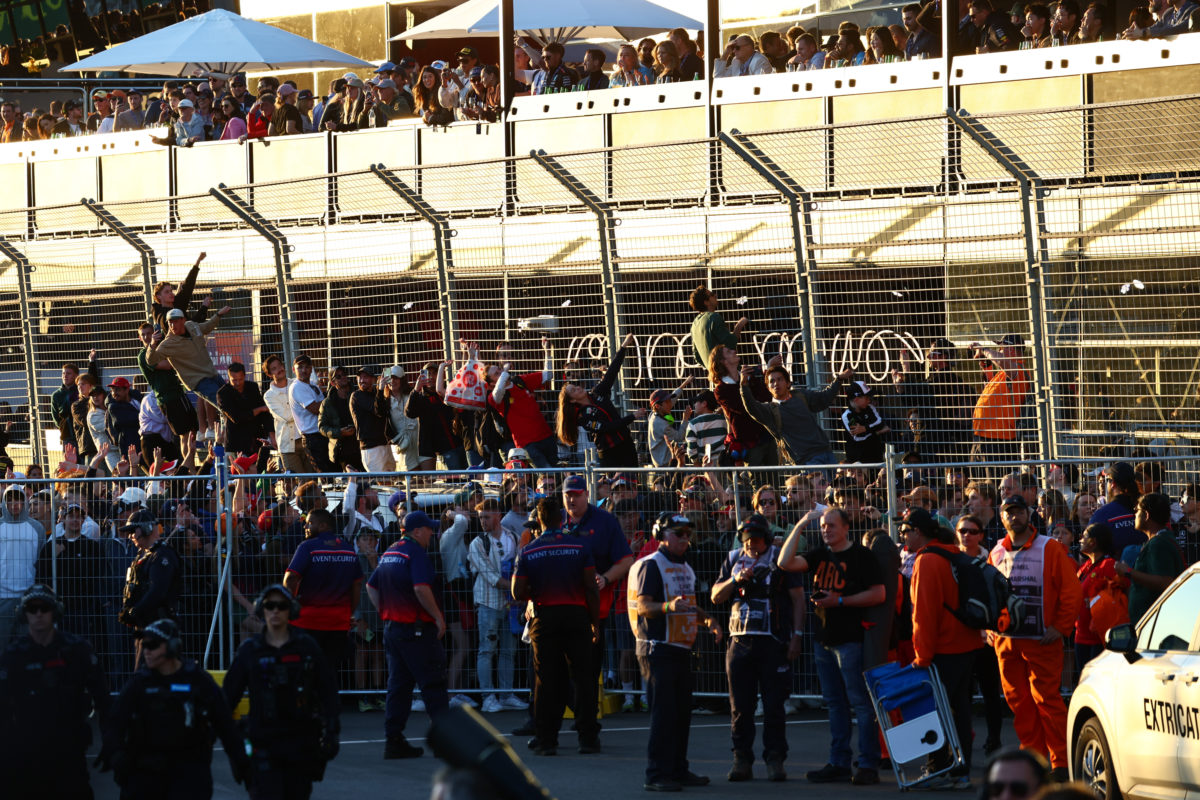

Australian Grand Prix Corporation CEO Andrew Westacott does not believe there is any need for the FIA to impose a ban on the event following the fan invasion that took place before the race had concluded on Sunday.
Race organisers were found to be in breach of the FIA’s International Sporting Code after failing to prevent spectators from accessing a live race circuit.
Following a meeting with the stewards, the AGPC “candidly admitted the failures in terms of the security protocols and safety measures”, and a thorough investigation is now ongoing. It has requested until June 30 to complete its review.
Once submitted, the World Motor Sport Council will assess the document and determine whether its submissions are sufficient and whether any sanctions are required.
“I would hope that there’s not a ban, and I don’t think there needs to be a ban,” said Westacott, following what was his last race after 12 years as chief executive of the AGPC, and 17 overall with the organisation.
The date the review is due to be submitted will be his final day in office.
Confusing race end no excuse
He added: “What I would say is clearly, you have primary, secondary and tertiary lines of protection, which are physical infrastructure barriers, and you then have individuals who look after those areas.
“At all times, race marshals are in conversation, via their sector managers up to race control, and importantly, we have security, going back to our team in GP command, which is staffed by about 50 to 60 experts.
“We also have what’s called an ECC, an Emergency Coordination Centre, that has every emergency service in place.
“With the combination of infrastructure, and modified and reviewed plans, which we always have to do, then next year it [fans on track after a race has concluded] can happen, and it can happen appropriately.
“But clearly what happened yesterday was not a good situation.
“What I also do say is, thank you for common sense as well, because the fans probably realised the issue.
“It was somewhat confusing for everyone at the end of the race. Confusion isn’t an excuse whatsoever.
“I just think there was a level of exuberance and excitement, given the large crowds, and given the great race we had and people wanted to get out onto the track, but they did so in a manner that wasn’t safe.”
Robust protocol breached
The conclusion to the race is in the spotlight after two red flags were shown and restarts were conducted in the final four laps.
The last lap of the race proved to be nothing more than a parade tour of the 12 cars still taking part given the number of incidents that had unfolded.
Many fans, however, managed to breach the security fences at the top end of the main start-finish straight before the race had officially concluded.
Part of the concern for the FIA and the stewards is that some spectators reached Nico Hulkenberg’s Haas, which was determined to still be in an unsafe condition as there was the likelihood of an unsafe electrical discharge.
“We work every year to allow the fans to access the track at the end of the straight after the cars have passed,” added Westacott.
“This was clearly a breach of what is a very robust protocol that’s been developed and improved every year, and a protocol that we look at with the officials from Motorsport Australia, security providers, engineering providers, and Victoria Police.
“We then not only do table-top exercises, but we actually do simulations out on track to see that it works – something hasn’t gone quite right.”
Confirming “a thorough investigation” has already started, Westacott was unable to state at this stage why such a breach was able to take place.
“We don’t know what was lacking, because there are many factors, whether it’s infrastructure or personnel,” he said.
“Before we jump to any conclusions, what we’ll do at the Corporation is look at the plans, look at the infrastructure we had in place, talk to our area managers, but most importantly, look at the CCTV that comes from a number of sources.
“It comes from the CCTV that we have on the circuit, from the race control CCTV, and from individuals, obviously the public.”






















Discussion about this post